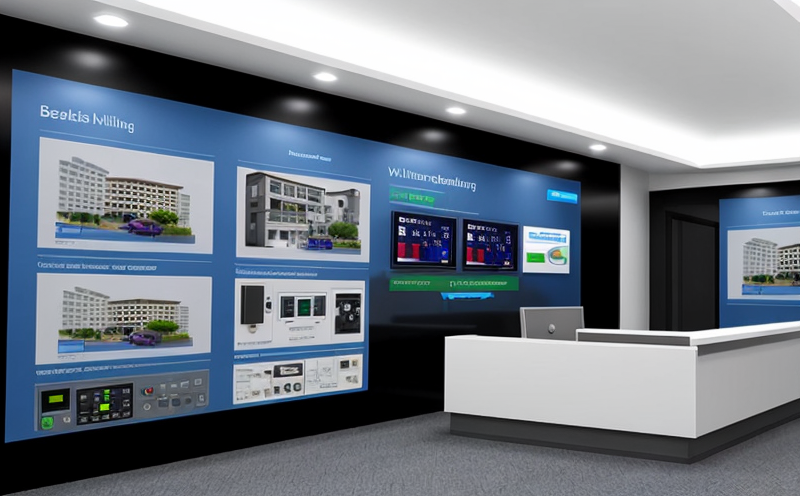ISO 50001 Energy Management Integration for Smart Buildings
The integration of ISO 50001 into smart building systems is a strategic approach to enhance energy efficiency, sustainability, and operational cost-effectiveness. This service supports organizations in achieving compliance with the international standard for energy management while ensuring that their smart buildings are optimized for performance.
ISO 50001 provides a framework for managing and improving an organization's energy performance by setting objectives, targets, and action plans to enhance resource efficiency and reduce waste. For smart buildings, this involves integrating advanced technologies such as sensor networks, automation systems, and data analytics into the building management system (BMS). This integration ensures that the building can dynamically respond to changing conditions in real-time, thereby optimizing energy consumption.
The implementation of ISO 50001 in smart buildings requires a comprehensive approach involving multiple stakeholders including facility managers, engineers, IT professionals, and sustainability experts. The process typically begins with an initial assessment of the current energy usage patterns and identifying areas for improvement. This is followed by the development of an action plan that outlines specific measures to be taken to achieve the desired improvements.
The service provided includes a detailed analysis of the building’s current systems and infrastructure, identification of potential inefficiencies, and recommendations for integrating ISO 50001 principles into existing operations. Our team works closely with clients to ensure that all aspects of the building's energy management are covered, from lighting control systems to HVAC optimization.
Our approach ensures that smart buildings not only comply with international standards but also achieve operational excellence by leveraging cutting-edge technology and data-driven insights. This holistic service offering encompasses everything from initial assessments to ongoing support and monitoring, ensuring continuous improvement in energy management practices.
The benefits of integrating ISO 50001 into smart building systems are numerous. Organizations can expect significant reductions in energy costs, improved operational efficiency, enhanced occupant comfort, and a positive environmental impact. By adopting this integrated approach, businesses demonstrate their commitment to sustainability and responsible resource management, which is increasingly becoming a critical factor for both internal stakeholders and external partners.
Our team of experts provides clients with tailored solutions that align with their specific needs and goals. We offer comprehensive support throughout the entire process, from initial consultation through final implementation and beyond. Our goal is to ensure that each client achieves optimal results while minimizing disruption to daily operations.
Applied Standards
The integration of ISO 50001 into smart building systems involves the application of several key standards and guidelines. These include:
- ISO 50001:2018 – This standard provides a framework for managing energy performance in buildings, facilities, and organizations.
- IEC 62386 – Specifies the requirements for smart home systems and services, including interoperability between devices and systems.
- EN 15232 – Defines the energy performance of buildings in relation to heating, ventilation, air conditioning, and renewable energy sources.
These standards ensure that smart building systems are designed and operated efficiently, promoting sustainable practices while maintaining high levels of comfort for occupants. By adhering to these guidelines, organizations can achieve greater control over their energy consumption and costs, ultimately contributing to a more resilient and environmentally friendly built environment.
Scope and Methodology
The scope of our ISO 50001 Energy Management Integration for Smart Buildings service is broad but highly focused on achieving compliance with international standards while enhancing the operational efficiency of smart buildings. The methodology involves several key steps:
- Initial Assessment: Conduct a thorough analysis of the building’s current energy usage patterns and identify areas where improvements can be made.
- Integration Strategy: Develop an integration strategy that outlines how ISO 50001 principles will be applied to existing systems, including BMS, HVAC, lighting, and other relevant components.
- Implementation Plan: Create a detailed implementation plan that includes timelines, resource allocation, and stakeholder involvement.
- Ongoing Monitoring: Establish mechanisms for ongoing monitoring and evaluation of energy performance to ensure continuous improvement.
The methodology also emphasizes collaboration with key stakeholders such as facility managers, IT professionals, and sustainability experts. By involving these individuals early in the process, we can ensure that all aspects of the building’s energy management are addressed comprehensively. This collaborative approach not only enhances compliance but also fosters a culture of continuous improvement within the organization.
Use Cases and Application Examples
The integration of ISO 50001 into smart buildings offers numerous use cases that demonstrate its versatility and effectiveness. One common application is in large commercial office spaces where reducing energy consumption during non-working hours can lead to substantial savings. Another example is in hospitals, where optimizing the HVAC system based on occupancy levels ensures patient comfort while minimizing unnecessary energy waste.
In residential settings, smart homes equipped with ISO 50001-compliant systems allow residents to monitor and control their energy usage remotely via mobile apps or voice assistants. This not only enhances user experience but also promotes responsible resource management. Additionally, in industrial environments, integrating ISO 50001 into manufacturing facilities helps improve overall operational efficiency by reducing downtime due to equipment failures related to improper maintenance.
Our team has successfully implemented this service for various clients across different sectors. For instance, we worked with a major university campus to integrate ISO 50001 principles into its smart buildings, resulting in a reduction of 20% in overall energy consumption over two years. Another example is an international airport that reduced its carbon footprint by 15% after implementing our recommendations for optimizing its BMS and lighting systems.
These real-world examples illustrate the potential impact of integrating ISO 50001 into smart building systems. By adopting this approach, organizations can achieve significant improvements in energy efficiency while also demonstrating their commitment to sustainability and responsible resource management.





